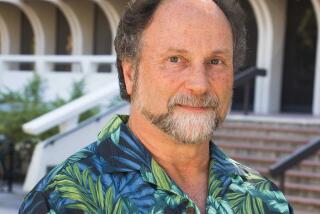IRVINE : $2.5 Million to Fund UCI Smoking Study
- Share via
On the eve of the American Cancer Society’s Great American Smoke-Out, officials at the University of California announced Wednesday that UC Irvine scientists have won $2.5 million to study the impact of cigarette smoke on health.
The seven UCI projects were funded from a new tax on tobacco. In November, 1988, California voters approved Proposition 99, which imposed a 25-cents-a-pack surtax on cigarettes to raise money for health care. So far, about $68 million has been disbursed from those funds for tobacco-related research.
After a review by 130 scientists around the country, UC investigating teams received $39 million. Another $29 million went to researchers at other agencies, including USC, Stanford University and San Diego State University.
Among the UCI projects that won approval:
* Derek Dunn-Rankin, a mechanical engineering assistant professor, will develop a fiber-optic instrument to measure minute particles of cigarette smoke.
* Microbiologist Eric J. Stanbridge will study how cigarette smoke may cause genetic alterations in lung cells that can cause lung cancer.
* Using an animal model--a ferret--Ronald E. Rasmussen, an associate adjunct professor in community and environmental medicine, will look at the effects of second-hand smoke on children.
* Robert Phalen, a professor of community and environmental medicine, plans to build a model of a lung and then calculate the toxic effects of cigarette smoke on newborns, infants, children and teen-agers.
* Pathology investigator Yutaka Kikkawa will study how the human lung metabolizes a substance called benzo pyrene, present in tars and cigarette smoke.
* Microbiologist Graham Casey will look at various stages of lung cancer and mutations in the lung during cancer that involve changes in an internal structure called p53 protein.
* Dr. James H. William, an assistant professor in UCI’s Department of Medicine, plans to look at white blood cells and “demonstrate new models for studying tobacco products-inducted emphysema.”






